Related Research Articles

Mantua is a city and comune in Lombardy, Italy, and capital of the province of the same name.
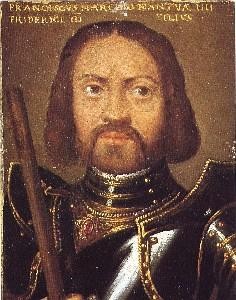
Francesco II Gonzaga was the ruler of the Italian city of Mantua from 1484 until his death.

Federico II of Gonzaga was the ruler of the Italian city of Mantua from 1519 until his death. He was also Marquis of Montferrat from 1536.

Ludovico III Gonzaga of Mantua, also spelled Lodovico was the ruler of the Italian city of Mantua from 1444 to his death in 1478.
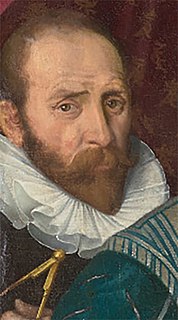
Frans Pourbus the Younger (1569–1622) was a Flemish painter, son of Frans Pourbus the Elder and grandson of Pieter Pourbus. He was born in Antwerp and died in Paris. He is also referred to as "Frans II".

Aloysius de Gonzaga was an Italian aristocrat who became a member of the Society of Jesus. While still a student at the Roman College, he died as a result of caring for the victims of a serious epidemic. He was beatified in 1605 and canonized in 1726.

Giulio Romano, also known by his real name of Giulio Pippi, was an Italian painter and architect. He was a pupil of Raphael, and his stylistic deviations from High Renaissance classicism help define the 16th-century style known as Mannerism. Giulio's drawings have long been treasured by collectors; contemporary prints of them engraved by Marcantonio Raimondi were a significant contribution to the spread of 16th-century Italian style throughout Europe.

The Duchy of Mantua was a duchy in Lombardy, Northern Italy. Its first duke was Federico II Gonzaga, member of the House of Gonzaga that ruled Mantua since 1328. The following year, the Duchy also acquired the March of Montferrat, thanks to the marriage between Gonzaga and Margaret Paleologa, Marchioness of Montferrat.
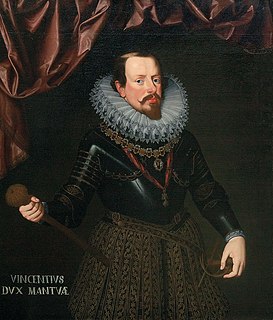
Vincenzo Ι Gonzaga was ruler of the Duchy of Mantua and the Duchy of Montferrat from 1587 to 1612.

The Battle of Castiglione saw the French Army of Italy under General Napoleon Bonaparte attack an army of Habsburg Monarchy led by Feldmarschall Dagobert Sigmund von Wurmser on 5 August 1796. The outnumbered Austrians were defeated and driven back along a line of hills to the river crossing at Borghetto, where they retired beyond the Mincio River. The town of Castiglione delle Stiviere is located 10 kilometres (6 mi) south of Lake Garda in northern Italy. This battle was one of four famous victories won by Bonaparte during the War of the First Coalition, part of the French Revolutionary Wars. The others were Bassano, Arcole, and Rivoli.
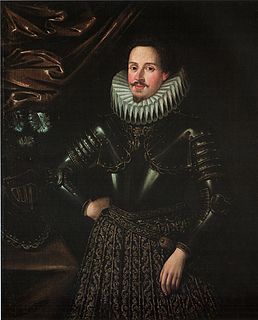
Ferdinand I Gonzaga was Duke of Mantua and Duke of Montferrat from 1612 until his death.
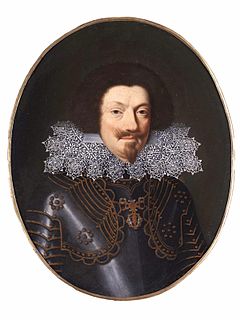
Charles Gonzaga was Duke of Mantua and Duke of Montferrat from 1627 until his death. He was also CharlesIII Duke of Nevers and Rethel, as well as Prince of Arche and Charleville.

Ferdinando Carlo Gonzaga was the only child of Duke Charles II of Mantua and Montferrat, and the last ruler of the Duchy of Mantua of the House of Gonzaga.
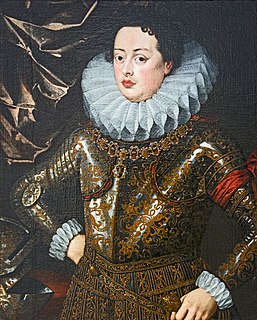
Francesco IV Gonzaga, was Duke of Mantua and Duke of Montferrat between 9 February and 22 December 1612.

The Duchy of Guastalla was an Italian state which existed between 1621 and 1748. It was bordered by the Duchy of Modena and Reggio and the Po River to the north, on the opposite bank of the Duchy of Mantua.

Charles II Gonzaga was the son of Charles I, Duke of Mantua, and Catherine de Lorraine-Guise. He was the Duke of Nevers and Rethel, together with his father.

During the siege of Mantua, which lasted from 4 July 1796 to 2 February 1797 with a short break, French forces under the overall command of Napoleon Bonaparte besieged and blockaded a large Austrian garrison at Mantua for many months until it surrendered. This eventual surrender, together with the heavy losses incurred during four unsuccessful relief attempts, led indirectly to the Austrians suing for peace in 1797. The siege occurred during the War of the First Coalition, which is part of the French Revolutionary Wars. Mantua, a city in the Lombardy region of Italy, lies on the Mincio River.
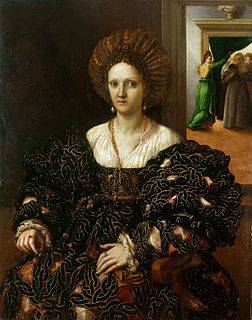
Margaret Palaeologa, was the ruling Marquise regnant of Montferrat in her own right between 1533 and 1536. She was also Duchess of Mantua by marriage to Federico II, Duke of Mantua. Margaret acted as the regent of the Duchy of Mantua twice during the minority of her sons: for her elder son Francesco III Gonzaga, Duke of Mantua in 1540-1549, and for her younger son Guglielmo Gonzaga, Duke of Mantua, between 1550 and 1556.

Francesco Gonzaga was an Italian bishop and a Cardinal of the Roman Catholic Church during the reigns of Popes Pius II, Paul II and Sixtus IV.

Federico Gonzaga, Cardinal of Monferrato was an Italian Roman Catholic cardinal and bishop.
References
- Coddè, Pasquale (1837). Memorie biografiche poste in forma di dizionario dei pittori, scultori, architetti, ed incisori Mantovani. Fratelli Negretti, Mantua. pp. 63.